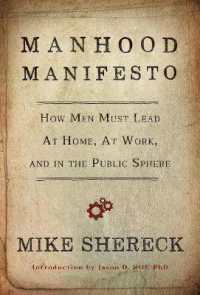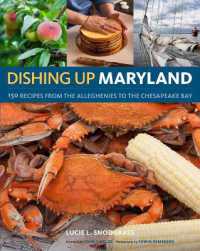基本説明
This book looks at multimodal corpora in some depth, using backchanneling as the conversational feature to be analyzed.
Full Description
This book proposes the use of multimodal corpora in order to examine spoken discourse more effectively and with greater accuracy. Current corpora are invaluable resources for generating accurate and objective analyses of patterns of language use. However, spoken corpora are effectively mono-modal, presenting data in the same physical medium - text. The reality of a discourse situation is lost in its representation as text. Using multimodal data sets when conducting corpus-based pragmatic analyses is one solution. This book looks at multimodal corpora in some depth, using backchanneling as the conversational feature to be analyzed. It provides a bottom-up study of multimodal corpora; their physical construction and a methodology for the analysis of specific linguistic phenomena across their multiple streams of data. Dawn Knight also looks at possible directions in the construction and use of multimodal corpus linguistics. Furthermore, the collaborative and cooperative nature of backchannels is highlighted and the book presents an adapted pragmatic-functional linguistic coding matrix for the characterization of backchanneling phenomena.
Corpus linguistics provides the methodology to extract meaning from discourse. Taking as its starting point the fact that language is not a mirror of reality but lets us share what we know, believe and think about reality, it focuses on language as a social phenomenon, and makes visible the attitudes and beliefs expressed by the members of a discourse community. Consisting of both spoken and written language, discourse always has historical, social, functional, and regional dimensions. Discourse can be monolingual or multilingual, interconnected by translations. Discourse is where language and social studies meet. "The Corpus and Discourse" series consists of two strands. The first, Research in Corpus and Discourse, features innovative contributions to various aspects of corpus linguistics and a wide range of applications, from language technology via the teaching of a second language to a history of mentalities. The second strand, Studies in Corpus and Discourse, is comprised of key texts bridging the gap between social studies and linguistics.
Although equally academically rigorous, this strand will be aimed at a wider audience of academics and postgraduate students working in both disciplines.
Contents
Part I: A Brief History of Corpus Linguistics; 1. Introduction; 2. Monomodal Corpus Linguistics; 3. Multimodal Corpus Linguistics; Part II: Communication 'Beyond the Text'; 4. Language and Gesture; 5. Backchannels; 6. Analysing Language and Gesture in Multimodal Corpora; 7. A Coding Matrix for Backchanneling Phenomena; Part III: The Future of Multimodal Corpus Linguistics; 8. Semi-Automated Gesture Tracking; 9. Ubiquitous Corpora; Bibliography; Index.








